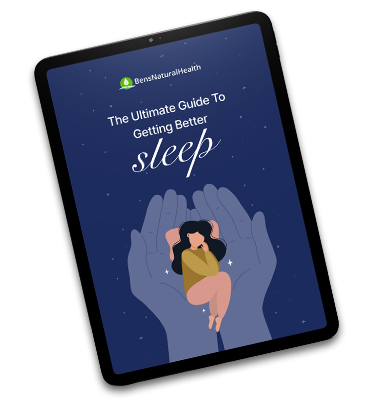The uterus is shaped like an upside-down pear and is situated in your pelvis between your bladder and your rectum.
The exact position of the uterus within the pelvis varies among women and can change, especially during pregnancy.
In the majority of cases, the uterus lies over the bladder and points towards your belly.
This is considered to be the most common position of the uterus, and it is often referred to as an anteverted uterus.
An anteverted uterus doesn’t cause any health problems.
The uterus can also be angled back toward your spine instead of pointing toward your belly. This is referred to as a tilted or retroverted uterus.
Read on to learn more about retroverted uteruses and how a tilted uterus can affect a woman sexually.
Can you be sexually active with a tilted uterus?
Yes, having a tilted uterus typically does not affect one’s ability to engage in sexual activity. However, some individuals with a tilted uterus may experience discomfort during certain sexual positions, and it’s advisable to communicate with a healthcare provider if any concerns arise.
How a retroverted uterus can affect women sexually
A tilted uterus is relatively common, but prevalence estimates vary. Some studies show that it affects up to 18% of women.
Some women may never be aware they have a retroverted uterus because it rarely causes any symptoms.
It is important to note that a tilted uterus is a normal uterine position and isn’t an illness. However, it might cause certain health problems – especially if it is associated with other conditions.
Below, we discuss various aspects of sexuality and how a tilted uterus may affect them.
1) Fertility
A retroverted uterus shouldn’t affect your fertility. If you have a tilted uterus and you are having problems getting pregnant, it might be due to other conditions of your uterus that can affect fertility.
Some conditions that affect fertility which may be associated with a retroverted uterus include:
Uterine fibroids
Studies show that uterine fibroids can affect fertility in various ways, including blockage of the fallopian tubes and affecting implantation of a fertilized egg in the womb.
Pelvic inflammatory disease (PID)
PID can cause blockage of the fallopian tubes, which can make it difficult to get pregnant.
Endometriosis
Studies have shown that endometriosis may make it difficult to conceive. However, the exact reason for this is not currently known.
2) Pregnancy
A tilted uterus should not affect your pregnancy in any way. No correlation has been found between a tilted uterus and complications during pregnancy and delivery.
It may cause or worsen some uncomfortable symptoms, however. For instance, during your first trimester, a tilted uterus might increase the pressure on your bladder.
This may lead to difficulty urinating, frequent urination, or incontinence. In some women, it may also cause back pain.
Pregnancy eventually causes the uterus to straighten up around the end of the first trimester. The uterus returns to its tilted position after delivery.
3) Intercourse
A retroverted uterus hardly interferes with sexual sensation and enjoyment. But, on occasion, it can cause painful intercourse.
Because the uterus is positioned differently, you may experience some discomfort during certain sexual positions and with deep thrusting. We discuss some possible solutions to this below.
Get 10% Off Our Products!
- Sign up for our newsletter
- Get Your FREE Sleep Guide
- Be the first to hear about sales and promotions
- Stay up to date on our latest health news
Best sex positions for a tilted uterus
When you have a tilted uterus and you’re sexually active, positions in which the penis is angled toward the back wall of the vagina and those that encourage deep thrusting are more likely to cause pain.
Some of the best sexual positions that may help reduce discomfort include:
Modified missionary
By keeping your legs straight and closer together, you prevent your partner from thrusting too hard.
This can reduce pain and also encourage greater friction on the clitoris, which leads to even more pleasure.
Spooning
When lying on your side, you have more control over the depth of penetration.
Cowgirl (girl on top)
This is sometimes a painful position for women with a retroverted uterus because it allows deeper penetration. But it can work if you position yourself in a way that makes it easier to control the depth of penetration.
Leaning forward towards your partner’s head or chest may help.
Modified doggy style
The doggy style can be painful for women with a retroverted uterus since it gives your partner most of the control over the depth of penetration.
But a few tweaks here and there can allow you to enjoy this sexy position.
Keeping your back arched and butt elevated allows you to take better control with doggy style. You or your partner can also easily reach for your clitoris to multiply the pleasure.
Ultimately, you have to try out different positions and communicate with your partner to find positions that work well for you.
Does a retroverted uterus cause painful periods?
Most women experience no symptoms with a tilted uterus. However, certain studies indicate that it is associated with increased severity of menstrual pain in some women.
This may be because the uterus is bent at an angle, making it more difficult for blood to freely flow out.
Painful periods may also occur if the retroverted uterus is associated with a condition that can cause menstrual pain, like endometriosis or uterine fibroids.

What causes a retroverted uterus?
Some women are born with a retroverted uterus, while other women acquire it during the course of their lives as a consequence of an underlying condition.
Conditions that may cause a tilted uterus include:
Endometriosis
This condition occurs when tissue resembling that of the inner lining of the uterus is found outside the uterus, most commonly in the pelvis.
It could lead to inflammation and scar tissue formation outside the uterus, which could pull it backward.
Adhesions or scarring
Adhesions are band-like scar tissues that can cause structures in the pelvis to cling together.
When they form on the uterus, they can cause it to stick to surrounding tissues and pull it backward.
Adhesions can occur as a result of pelvic surgeries (like cesarean sections), pelvic inflammatory disease, and other conditions like endometriosis.
Uterine fibroids
Fibroids may increase the size, shape, and weight of the uterus, causing it to tilt backward.
Childbirth
The pelvic floor muscles and ligaments can become overly stretched during pregnancy and delivery. This can cause them to weaken over time and lead to retroversion of the uterus.
Menopause
Women who are in menopause could have weakened pelvic muscles due to a decrease in the hormone estrogen.
This reduces the support the uterus has, which could result in it tilting backward.
How do you treat a tilted uterus?
Your healthcare provider may recommend the following treatment options if your tilted uterus is causing problems:
Pelvic exercises
Kegel exercises are a popular form of pelvic exercise recommended in women with tilted uteruses. Other types include knee-to-chest stretches.
Pelvic exercises are still under debate as a long-term solution to a tilted uterus because, oftentimes, the uterus simply tips backward again.
Pessary
A small plastic or silicon device can be used either temporarily or permanently to help maintain the uterus in a forward position.
However, the use of a pessary increases the risk of infections and inflammation.
Treatment of the underlying condition
Directly treating the underlying condition that is causing the retroverted uterus may resolve symptoms.
For example, hormone therapy in endometriosis reduces the amount of estrogen in the body, which leads to a reduction in pain.
Birth control is the most common form of hormone therapy and is available in pills, patches, and rings.
Surgery
The uterus can be repositioned to sit over the bladder by using a minimally invasive surgical technique like laparoscopic surgery.
Frequently Asked Questions
No, a penis cannot go far or deep enough for a man to feel the shape and position of your uterus.
A retroverted uterus usually doesn’t cause any symptoms. If they do occur, symptoms that may come with this condition include painful periods and painful sexual intercourse.
These symptoms are often because the woman has an associated underlying condition like endometriosis.
Conclusion
- A tilted or retroverted uterus refers to when the uterus points backward toward the spine.
- A tilted uterus rarely affects pregnancy, fertility, or sexual activity. However, it can be associated with other health conditions that can negatively affect your fertility and sexuality.
- Although sometimes it might present with painful intercourse and periods, there are often no symptoms related to a tilted uterus.
- If you happen to experience symptoms, there are various treatment options available to you, from regular pelvic exercises to surgery.
Explore More

Sex After Menopause: Tips To Make Intimacy More Comfortable.







